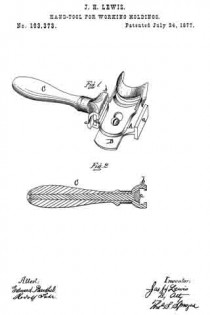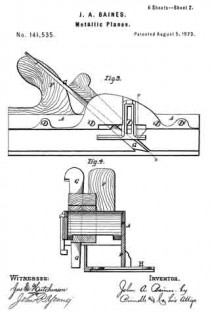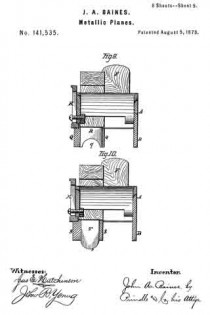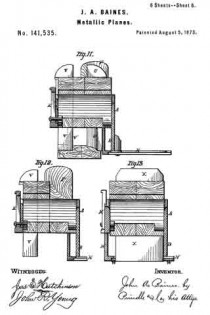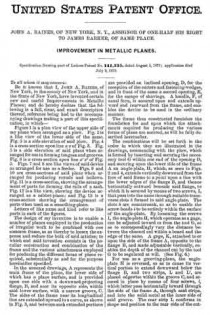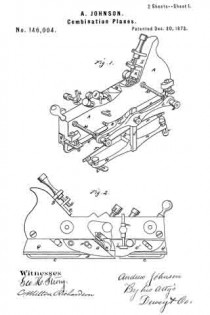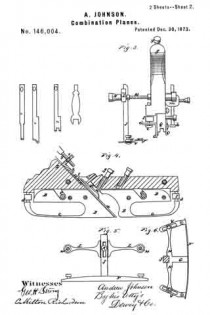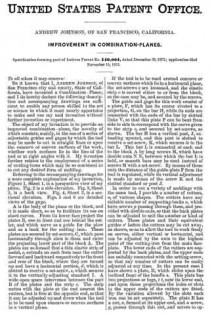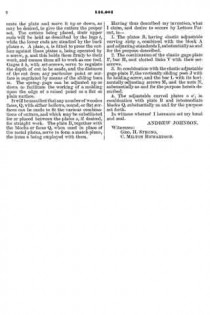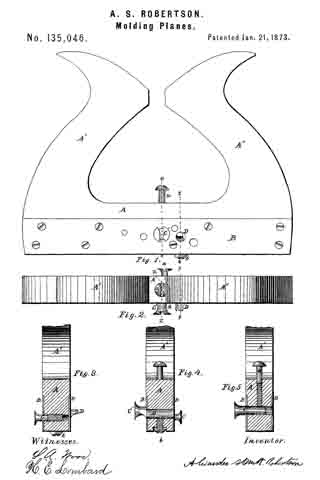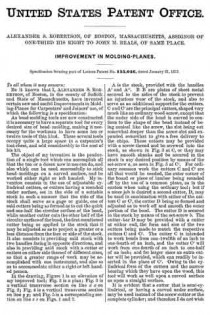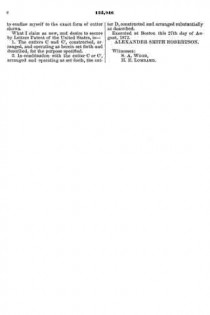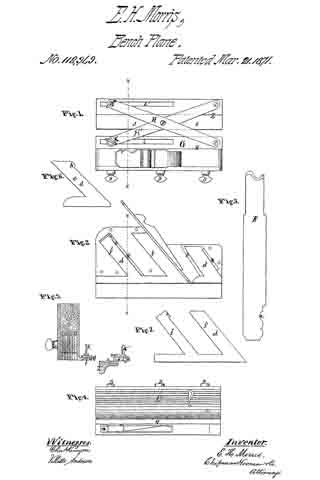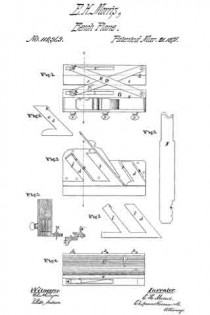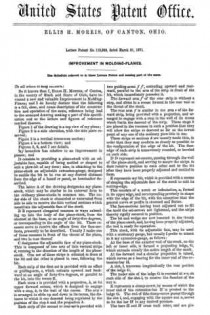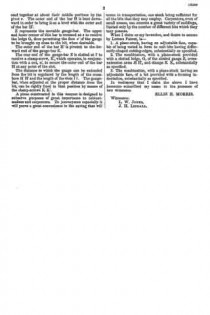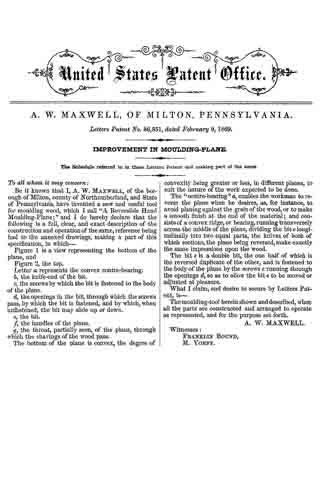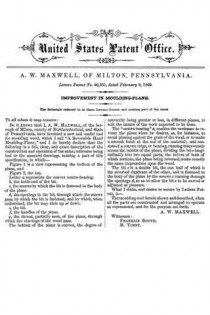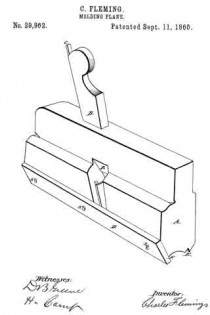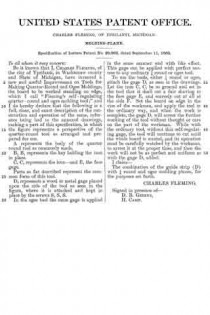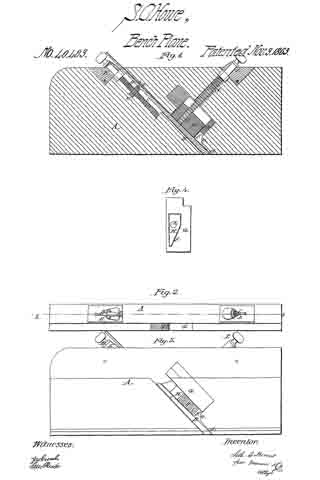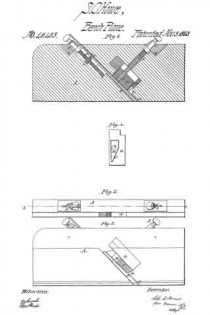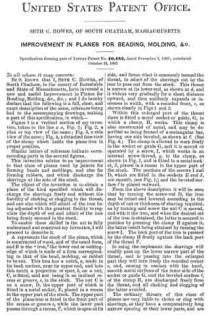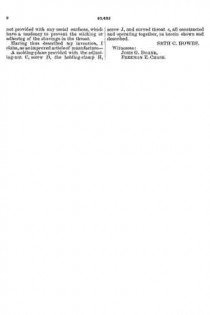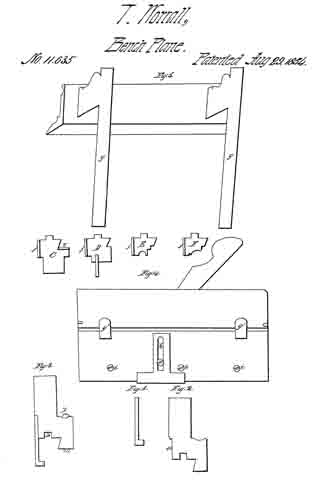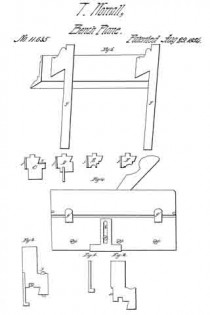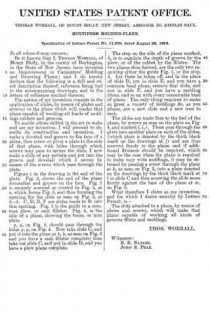No. 193,373 – Improvement In Hand-Tools For Working Moldings (James H. Lewis) (1877)

UNITED STATES PATENT OFFICE.
_________________
JAMES H. LEWIS, OF DETROIT, MICHIGAN.
IMPROVEMENT IN HAND-TOOLS FOR WORKING MOLDINGS.
_________________
Specification forming part of Letters Patent No. 193,373, dated July 24, 1877; application filed January 4, 1877.
_________________
To all whom it may concern:
Be it known that I, JAMES H. LEWIS, of Detroit, in the county of Wayne and State of Michigan, have invented an Improvement in Hand-Tools for Working Moldings, of which the following is a specification:
The nature of my invention relates to an improvement in hand-tools for working moldings, of which there is a great variety of shapes and sizes in a set; and has for its object to so construct the same that one pair of removable handles will fit and can be secured to any of the heads of the various tools.
The invention consists in the peculiar construction of the tool-heads and the handles, as more fully hereinafter set forth.
Figure 1 is a perspective view of one of my improved tools, with one handle detached. Fig. 2 is a longitudinal section through one handle.
In the drawing, A represents a metal stock or head, adapted to receive and have secured to it a bit, B, of the form to produce a given cross-section of molding. The head is cast at each side with a double-flanged rib, a, over which slides a T-slotted head, b, on the inner end of a wooden handle, C, which is secured thereon by driving in a taper key, c.
As hereinbefore stated, a full set comprises a great variety of forms and sizes of molding-tools, the heads alone of which take up but very little space in a joiner’s chest. In the present case one pair of handles will answer for the entire set, which costs less and takes up less space than a set with handles permanently attached.
What I claim as my invention is —
The head A of a hand molding-tool, cast with the flanged ribs a a and the handles C C, provided with the slotted heads b, adapted to be secured to said ribs by a taper key, c, driven in each, substantially as described.
JAMES H. LEWIS.
Witnesses:
H. F. EBERTS,
H. S. SPRAGUE.

